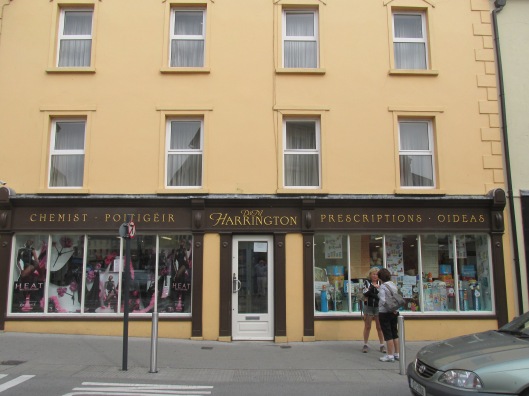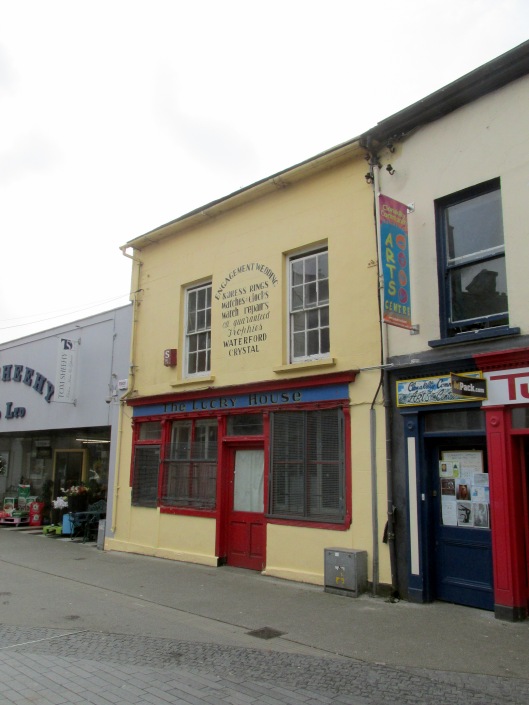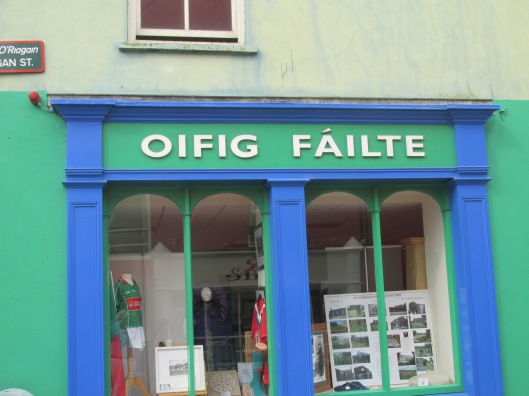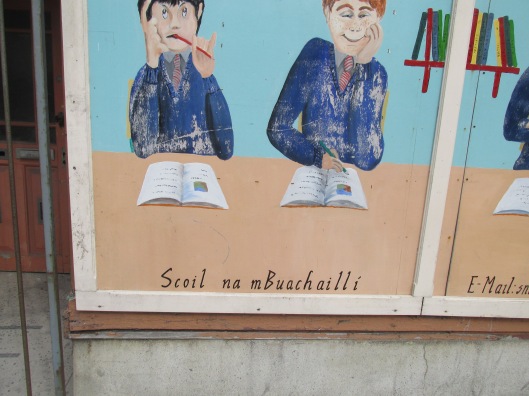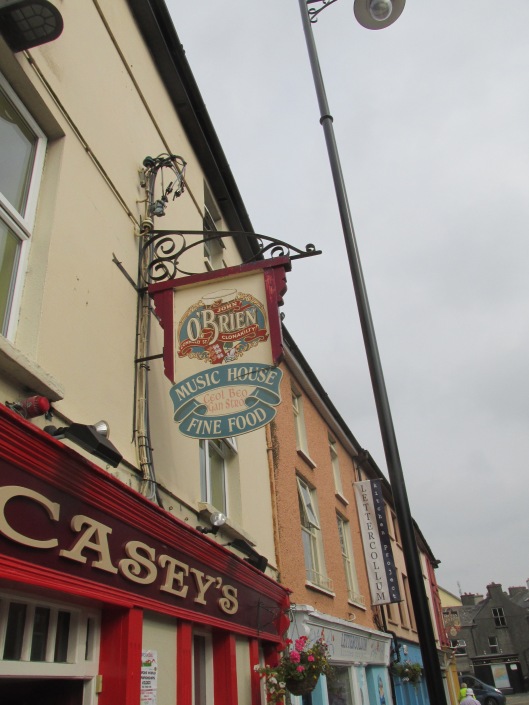https://www.google.ie/maps/place/Clonakilty,+Co.+Cork/@51.6215054,-8.8886995,11z/data=!4m2!3m1!1s0x484456e82a9da0bd:0xa00c7a99731a490
Clonakilty (Cloich na Coillte), West Cork, Market House early 1600s to 1953 base for Town hall. Petty Session Courts and Early Lawyers from area.

http://en.wikipedia.org/wiki/Clonakilty




Cork Lawyers:
https://docs.google.com/spreadsheet/ccc?key=0AqhnQGE3ANjzdEkxdVM0YVNzbzFHbV8tRGxNM2pmMWc#gid=0
Clonaklity
1818 Borough under Charter of James 1 with poweer to hold sessions for breaches of the peace and acourt of record for debts under £20 A Seneschal Court for debts of £10 and this being cheaper the record court is not often employed, In 1818 those confined to prison are for trifling offences drunkeness, petty broils, most of those arrested for debts have settled with their creditors
1639 Died Nicholas Barham His Majesties Commissioner for Conservation of the Peace Grandfather Baron Barham, father Arthur, Maidstone, Kent wife Rebecca Daughter Rebecca m Joh Snelling owner of fishery Whiddy island, Mary m William Slader Crookhaven
1862 Gerard Henry Fitzjames Barry King’s Inns Admissions Glandore, son Redmond, Commissioner of Fisheries late Customs Clerkunder 26.
1826 John Macan, Assistant Barrister, Co. Cork appointed Civil Process Officers Andrew McCarthy, James Brien both Rosscarbery
1824 James Bennett Attorney Sovreign St Slater’s Directory 1824
1820 Robert Burton Barrister 1720 Petition to Chief Secretary for posiyion of Coadjutor Barrister for Clon, Bandon, bantry, Skib and for son as Tidewaiter, Clon. Refers to layalty of Grandfather’s when Lord Mayor of Dublin. Chief Secretary papers
23rd December 1812 Rickard Deasy TCD King’s Inns Admissions, Attorney General, Baron Court Exchequer, Appeal Court Judge 2nd son Rickard Mary Anne Cotter Inns 1831 Associated with ‘Deasys Act’ conveyancing and Judge, family Brewers One of extended family founded IFA in 1960s Rickard Deasy http://en.wikipedia.org/wiki/Landlord_and_Tenant_Law_Amendment_(Ireland)_Act_1860 http://en.wikipedia.org/wiki/Rickard_Deasy Died 6th May 1883 at 41 Merrion Square, late Carysford, Blackrock, Lord Justice of Appeal. probate to Hugh O’Connor, 51 Upper Sackville St and John V Cassidy 53 Upper Mount St executors Effects £37,960 6s 9dresworn £38,396 15s 10d
1822 Alexander Donovan Admitted Grey’s Inns Eldest son James
1848 John Freke Evans BA TCD Admitted Grey’s Inns Ash Hill Towere Limerick and Milltown Castle (Castlefreke?), 31, 5th son Eyre
1819 Thomas Hungerford Attorney Rosscarbery memorial 504428
1879 Wiliam Frances Bence Jones Admitted Inner Temple, London
1887 Reginald Bence Jones Admitted Inner Temple, London Lisellan, only son of William Barrister, St. John’s College, Oxford
1750 William Bence Jones Attorney Also Lisselane, Clonakilty, held ‘Important public situations’ possibly descended from Welsh Jones Landed Estated Database
1824 John Lucas Attorney North-ring Slater’s Directory 1824
1829 Michael McCarthy Councellor Sister in law wife of brother Daniel died Jan 1829 O’Connell newspaper extracts, Dr Casey Vol 6 2092
1846 Eugene McCarthy Attorney Rosscarbery Slater’s directory
1826 Thomas O’Keeffe Admitted Grey’s Inns 4th son late Daniel
1824 James Spiller Attorney Barrack-St. Slater’s Directory 1824
1824-1885 Horace Payne Townsend TCD Lincolns Inn 1851 Derry, Roscarbert, son of Ew Chambre Corker Frances Vere Stewart, did not practice stock exchange investor, involved in bringing railway to Clonakilty Col John Townsend item 5D12
1764-1849 Commander John Townsend Recorder and Seneschal rom 1801 Had been in RN, son of Ohipil Mary Delap, m Eleanor Townsend and in Ross cathedral 1819 Agnes Somerville, Under him as Recorder sessions were held every quarter and peace is maintanined – Horatio Townsend. Also Freeman of Cork Colonel John Townsend Australia history item 316
1691-1756 John Townsend TCD Barrister 1720 Skirtagh. TCD 1708 first of Townsend family to qualify in law, father Colonelbryan Townsend Mary Synge, married Katherine Barry, did not practice. Freemn Clonakilty 1715. Colonel John Townsend Australia, family history item 300
1824 Edward Williamson Attorney Rosscarbery Pigot’s Directory Slater’s Directory 1824
1859- Thomas William Wright MA Solicitor, Registrar for Hon Justice wright, King’s Bench, Dublin Shannon Square, Clonakilty, apprenticed to father later parter with brother Henry T. Educated Portrora Enniskillen TCD, MA,
1845 Thomas R Wright Solicitor Fern Hill sons Henry Thomas 1850, Thomas Willam 1859
1850- Henry Thomas Wright Solicitor, clerk of Crown and Peace for East Riding, Registrar of Cork Local Bankruttcy and Admiralty Fern Hill, Cloakilty and Mardyke, Cork. Portora Royal School, Enniskillen, m Ethel second d of henry James Hungerford, Cahirmore, Rosscarbery, 2 son 3 daughters Pile Biograph, 1909













